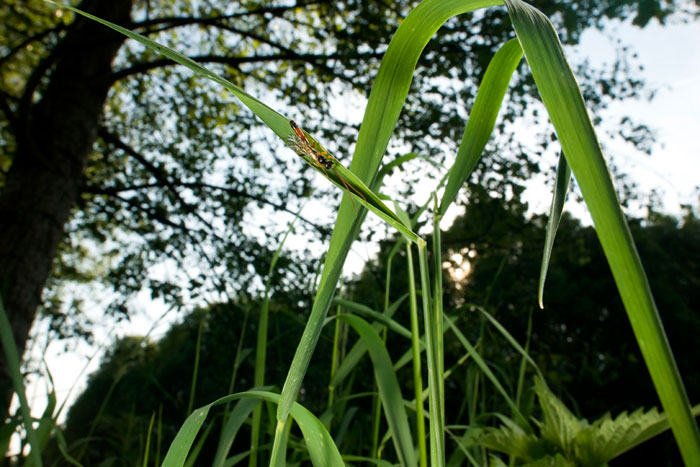
© 2011 Edwin Brosens. All rights reserved.
Tryphoninae at Nature Reserve
Sony Alpha 700 + 20 /1.8 + Flash, F/16 @ 1/80
Parasitic wasps make interesting subjects for photographers. Together with birds, they keep the population of insects in balance. Because these wasps are 5 – 40 mm in size, along with their environment, they can be a challenge for the photographer to capture great images.
Parasitic wasps are everywhere, so you can begin your search for them at a nature reserve or garden nearest to your home, or maybe all you’ll have to do is step out of your front door. Do your search before sunrise and look very carefully in the vegetation.
For the photo Tryphoninae above, I used a 20 mm wide-angle lens to get an environment photo that provides a good understanding of the places where parasitic wasps live and how they hide to protect themselves during the night. Within the image, you can see the sun in the background. It made it necessary for me to overexpose the image to make the wasp and grasses bright, while maintaining shadows to make the photo exciting. An image is built out of contrasting elements that make the photo complete. But contrast alone is not enough. I needed a flash to fill in the body of the wasp. Otherwise, the viewer would see the shadow on the body and no detail. It is important to see the structure and colors of your subject.
Worldwide, there are 330,000 species of parasitic wasps. Each wasp is specialized to feed on a particular insect. For example the female of an Ichneumonidae lays an egg into a caterpillar. The larva comes out of the egg and waits until the caterpillar is full-sized. Then, the larva eats the caterpillar and builds his own cocoon. The cocoon containing the wasp larva will fall on the ground after a few days.
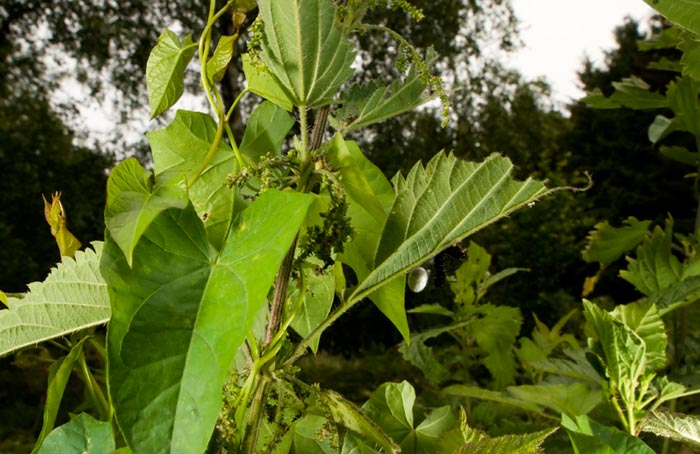
© 2011 Edwin Brosens. All rights reserved.
Consumed caterpillar by an Ichneumonidae and a built cocoon.
Sony Alpha 700 + 20/1.8 mm + flash, F/14 @ 1/30 sec.
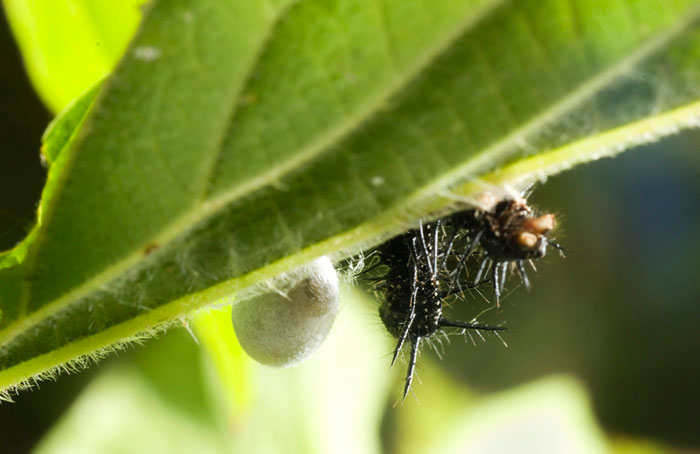
© 2011 Edwin Brosens. All rights reserved.
Consumed caterpillar by an Ichneumonidae and a built cocoon.
Sony Alpha 700 + Bellow + 90/2.8 macro + flash, F/16 @ 2 sec.
The contrast between the white cocoon and the black body of the caterpillar are a challenge to get clear and well exposed in one frame, so you’ll need to try different techniques. I used different flash levels to catch this one good shot. Because the subject didn’t move, I had time to figure out what to do, although I had to remember that the daylight in the background would soon be gone. I used my Novoflex bellow because the size of this frame is one centimeter and I wanted maximum quality. I also used my tripod because of the long exposure time of two seconds.
Fill-in Flash
I use about 30% flash light and 70% daylight in a photo, because natural daylight gives the best colors. But I have to use a flash to fill in the shade and to achieve more detail. The shutter speed is about 1.5 stops shorter. Use your flashgun wireless from your camera with an angle of 45 degrees on the subject. This gives nice light and more depth-of-field in the image, which is small enough with macro photography. Set the external flash at the right level, experimenting with steps of 1/1 to 1/32. Try some settings and see what gives the best result for you, or use a flash meter (an expensive piece of gear).
Behavior photos are difficult, so will find that patience will play a key role when you are in the field. I thought I was going to be lucky enough to be able to take photos of a Dusona that was waiting to parasitoid a caterpillar, but I was too late. The female had already laid the egg into the caterpillar. Perhaps another time… But, I decide to wait longer–another hour. I was close to the wasp (about 10 cm) and was very excited about the opportunity to capture a great photo. And then it happened. My patience paid off. The female was moving her “oviposer” to the caterpillar and it was time.
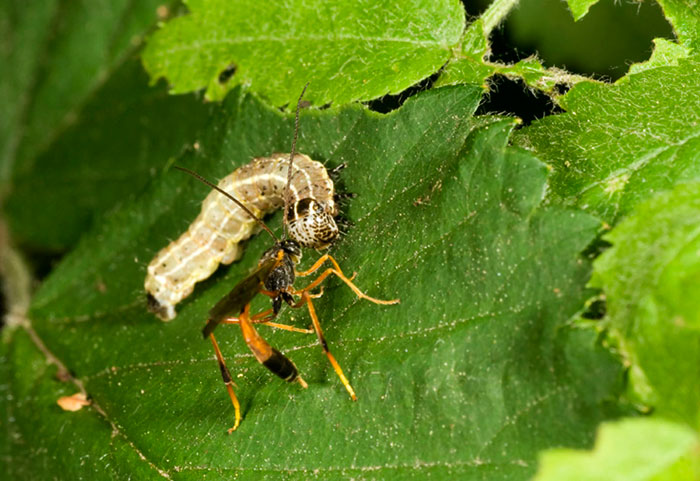
© 2011 Edwin Brosens. All rights reserved.
Dusona and Caterpillar
Sony Alpha 700 + 90 /2.8 Macro + Flash, F/18 @ 1/80 Sec.
White Balance
Many people ask how to know the right white balance setting. My advice is to look at the location of your subject. Set the WB of your camera at the position of your subject. In the case of the image above, I used a flash setting because the shutter speed was at 1/80 sec. It can be confusing for many when there is sunlight and shade in one frame, so only look at the position of your subject as you set the WB of your camera. If you’re still not sure, use a tripod and try a few different WB settings, examining the photographs to see for yourself. Experimenting is essential if you’re going to learn the photographic rules, because there is no formula that makes an image a guaranteed success. Try to become one with your subject and shoot photos over and over again. Practice is how we all learn.
On one warm sunny day, I found a Barichneumon Bilunulatus caught by a spider’s web. At first, I wanted to get two photographs. I setup my tripod and, with the macro-lens, I shot the close-up photo. You see the movement of the wasp; she’s trying to get out of the web. But that’s difficult for the wasp. I used the rear function of my flash option in the camera to freeze the last movement in the exposure time. This is very nice when the exposure times is o.4 sec. or longer. It looks like the movement is continuing in the image; this is because of the rear function.
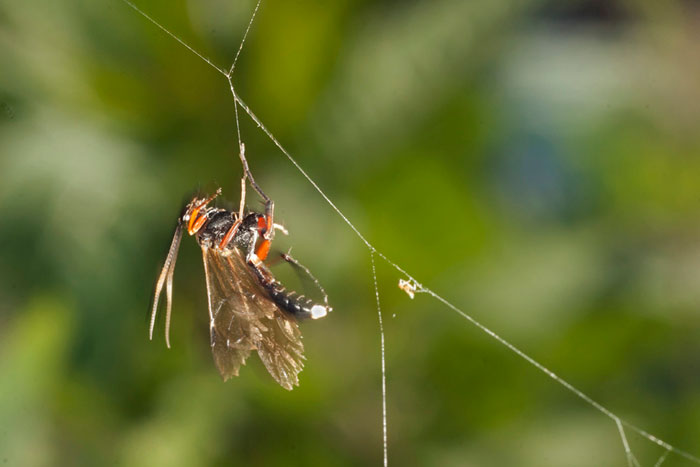
© 2011 Edwin Brosens. All rights reserved.
Barichneumon Bilunulatus
Sony Alpha 700 + 90 /2.8 + Flash, F/16 @ 1/40
I then changed my macro lens with the wide-angle lens of 20 mm and shot some photos to get environment images. I was lucky, because after 10 minutes the wasp was free and out of the spider’s web. After the shoot, I was in the clouds that I was able to catch this moment to share with others.
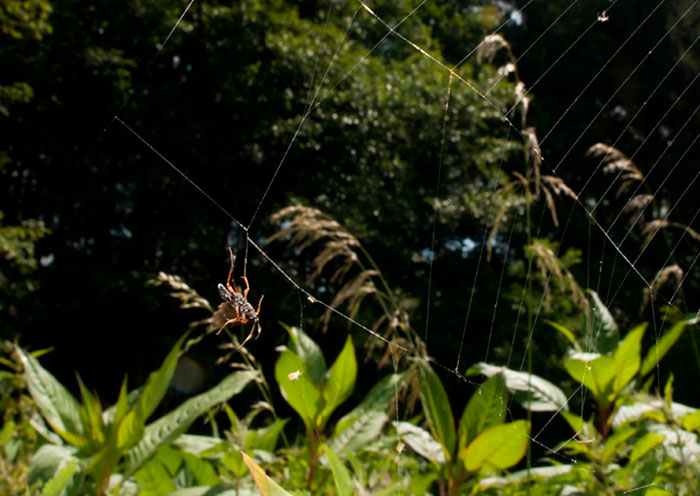
© 2011 Edwin Brosens. All rights reserved.
Barichneumon Bilunulatus
Sony Alpha 700 + 20 /1.8 + Flash, F/14 @ 0.4 sec.
ISO
Take care with high ISO, because when you use more than 400 ISO, you lose detail and sharpness. Many people use Photoshop to remove the noise, but it can’t bring back the details. And you’ll always see more noise with a macro lens because the ratio is between 1:4 and 1:1, so it is always better to stay below 400 ISO. Practice with your macro lens at home first by taking some photos of a flower. Vary the ISO setting to see the results.
Be Mindful of Your Subject
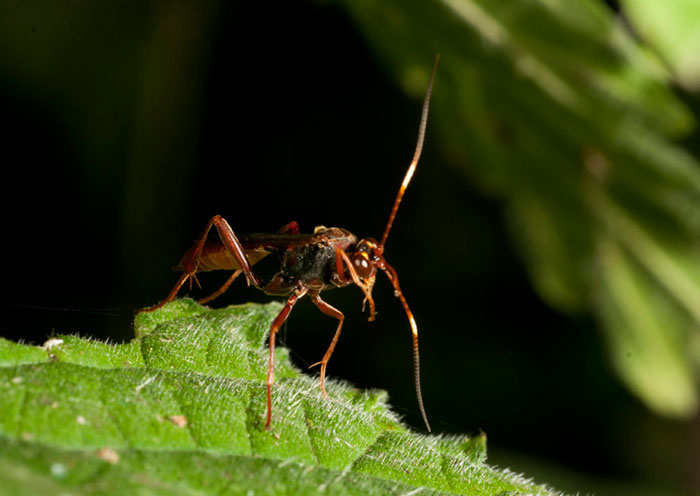
© 2011 Edwin Brosens. All rights reserved.
Tryphoninea
Sony Alpha 700 + 90 /2.8 Macro + Flash, F/16 @ 1/80 Sec.
I shot photos of this Tryphoninea while he was hiding himself under vegetation. I used a 90 mm/2.8 macro lens, so the body of the wasp is very sharp. This behavior image shows that I didn’t irritate the wasp; he’s cleaning his frond legs. They are very sensitive to air movement. When you try to move close with a camera, the movement can make the wasp fly away. So be as quiet as possible and go step by step, centimeter by centimeter closer to the wasp, and then shoot photos. You can bet 100% of your subjects will fly away after a few shots, but the loss is worth it.
Note: Don’t forget to use an sun cap on the lens, because flashlight can give light in the lenses, resulting in blurred white light in the image that you can’t remove even with Photoshop.
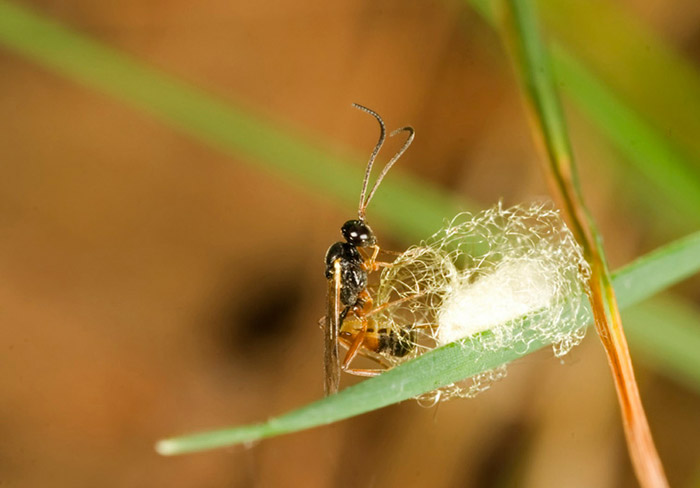
© 2011 Edwin Brosens. All rights reserved.
Chalcidoidea
Sony Alpha 700 + Bellow + 90/2.8 macro + flash, F/14 @ 1/40 sec.
At midday in the woods I found a small Chalciodoidea laying her egg into a cocoon. I was very pleased at that moment. This wasp is 4 mm in length, so getting it focused in the viewfinder is a challenge. I handheld my camera with my flash on a macro flash bracket by Manfrotto. You won’t always have time to set up your tripod.
Parasitic wasps as subjects give photographers plenty of opportunities to show their creativity, but in order to capture good photos, like with any critter, you need to take the time to understand their environment and their habits. Do some research on the Internet or visit your local library or museum. In addition, I get help from Professor Kees van Achterberg of Naturalis Leiden. Try to contact people in the scientific world to help you learn about the subject that’s the object of your passion.
In photography, success is more a matter of capturing rare moments in nature and less about becoming famous. Photography is a tool for communication that is aided by an unfolding array of new technical equipment, but the basics will always be the same.
We need photographers who are inspired by parasitic wasps to go out into the field to shoot photos of them. If and when you begin to photograph these wasps, send your results to me, and if you have any questions, please feel free to contact me. I would be happy to help you.
by Edwin Brosens

Leave a Reply